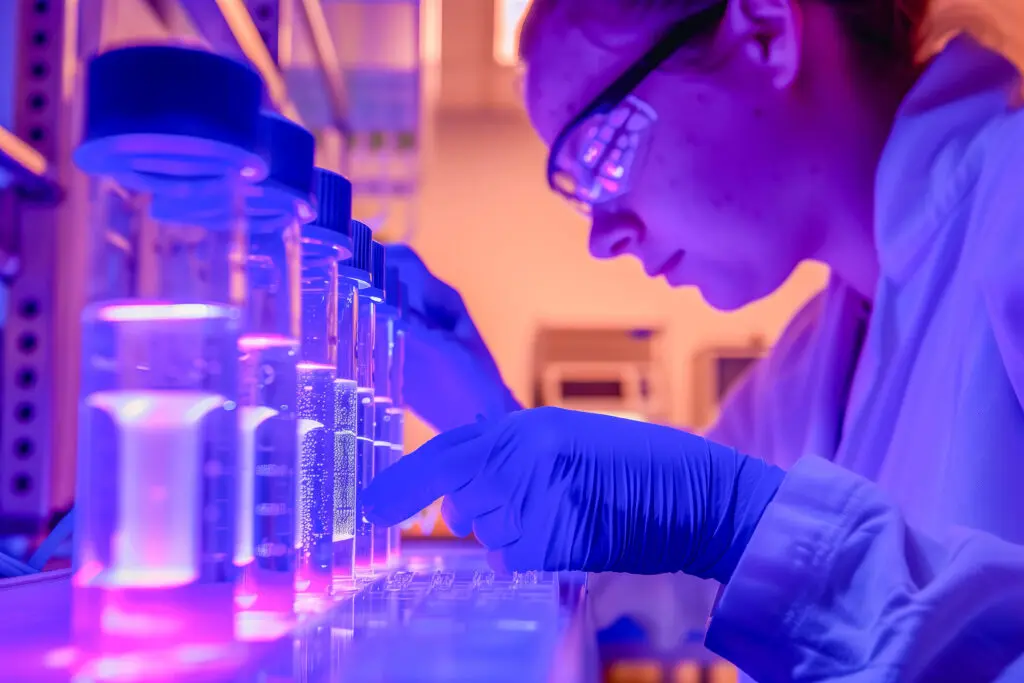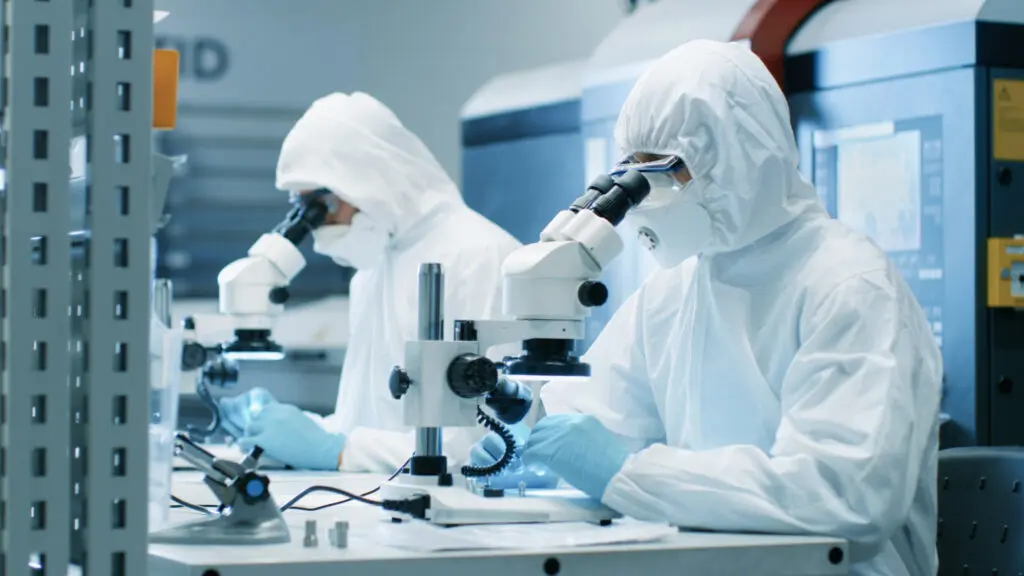
Hair Loss Nanotechnology – Cutting-Edge Solutions for Thinning Hair
The term “nanotechnology” sounds like something straight out of science fiction, but in reality it has become a fascinating area of medical research. Nanotechnology can be used in a variety of biomedical and cosmetic applications because engineered nanocarriers may allow more targeted delivery of active substances to specific tissues – for example, to hair follicles – and can improve local bioavailability in preclinical studies.
In this article we’ll be exploring how nanotechnology works, how scientists are already testing nanotechnology for hair loss applications, and when patients can expect to see nanotechnology hair treatments become available.
What is Nanotechnology in Hair Loss Treatment?
Nanotechnology might seem very high tech as a term, but the concept is relatively simple. When we discuss “nanotechnology“, we are referring to the manipulation of materials at a microscopic level. Depending on the field of study, this can mean manipulating biological cells, or even molecules and atoms.
When it comes to hair loss treatments, nanotechnology is typically used to target hair follicle cells. Many recent studies have investigated nanocarriers (for example, liposomes, nanoemulsions, solid-lipid nanoparticles and nanostructured lipid carriers) as delivery systems to increase follicular uptake of existing actives such as minoxidil and finasteride.
Most evidence so far is preclinical or from small early-phase studies showing improved drug delivery or local retention; robust evidence of clinical superiority in large RCTs is still lacking
How Hair Loss Nanotechnology Works

Some research has involved the use of nanotechnology in administering existing medications for hair loss, including oral medications such as finasteride and topical treatments like minoxidil. Which begs the question, how does nanotechnology work and what makes it more effective than simply taking medication normally?
Nanotechnology is effective in tackling hair loss in the following ways:
- Targeted Delivery: Nanotechnology allows for high precision in the delivery of medication and key nutrients, going directly to the follicle cells. This is a faster and more effective method than delivery via oral or topical means.
- Enchanced Absorption: Thanks to the targeted delivery, the cells can absorb the medicationa and/or nutrients more efficiently, with nothing lost or dispersed elsewhere in the body.
- Stimulation of Growth Phase: This targeted approach can encourage follicles to remain in the growth phase of the hair cycle, delaying the rest phase, which in turn reduces hair fall.
- Reduced Side Effects: As the solution is being delivered directly to the targeted cells, the chance of side effects elsewhere in the body is dramatically reduced.
The Potential Benefits of Nanotechnology Hair Treatments
There are a number of potential benefits that nanotechnology could present for patients suffering from hair loss. For one, it could very easily become part of a non-invasive course of treatment for those in the early stages of hair loss, or for cases in which hair transplantation is not suitable.
As nanotechnology refers more to the mode of delivery than to the medication itself, it could complement existing treatments like minoxidil and PRP. In this way, it has the potential to boost the effectiveness of treatments already used by many people suffering from hair loss.
Safety, Risks, and Considerations

Safety data is limited to date. While short-term local adverse events reported in small studies often relate to scalp irritation or sensitivity, published reviews highlight potential immunological responses and cytotoxicity associated with certain nanoparticle types. This emphasises the need for standardised safety testing and longer-term human data before routine clinical use.
At present, most UK products marketed as ‘nanotechnology’ relate to cosmetic applications (for example, hair-shaft conditioners) rather than licensed medical treatments for follicular regeneration. Clinically approved medical treatments for androgenetic alopecia in the UK remain topical minoxidil and oral finasteride; true nanotechnology-based medical therapies for hair regrowth have not yet received routine licensing for clinical practice.
Conclusion: Promising Studies, Big Potential
While those suffering from hair loss will have to wait quite some time before nanotechnology treatments become widely available, the research is certainly promising. In the meantime, you can explore a wide variety of other effective solutions with the guidance of your GP, ranging from PRP treatments and medications all the way to hair transplant surgery.
The field of hair restoration is always evolving, and at Elithair we keep a close eye on the latest scientific innovations to ensure that we are always at the cutting edge of hair loss treatments. If you’d like to discuss your options, our experts are always at hand to give you a free consultation with no obligations.
FAQs
When will nanotechnology hair loss treatments likely become available to the public?
Although research into nanotechnology for hair loss is advancing rapidly, most studies are still in the laboratory or early clinical trial stages. It may take several more years before nanotechnology-based treatments receive regulatory approval and become widely available in clinics or over the counter.
Are nanotechnology hair loss treatments suitable for both men and women?
Yes, in theory, nanotechnology-based treatments could be effective for both men and women, as they target the biological mechanisms responsible for hair growth at the follicular level. However, clinical trials will need to verify how each gender responds before treatments can be officially approved for widespread use.
How do nanotechnology treatments differ from traditional topical or oral hair loss solutions?
Traditional treatments, such as minoxidil or finasteride, work by being absorbed through the scalp or digestive system, which can lead to a dilution of the active ingredients before they reach the follicles. Nanotechnology, by contrast, allows for direct and targeted delivery of these ingredients to the follicle, enhancing absorption and potentially improving results while reducing systemic side effects.
Can nanotechnology be combined with hair transplantation procedures?
Yes, nanotechnology could eventually complement hair transplant procedures. For example, it might be used to enhance graft survival, stimulate faster healing, or encourage newly transplanted follicles to enter and maintain the growth phase for longer periods. However, this application is still theoretical and requires further study.
What kinds of nanomaterials are being used in current hair loss research?
Current studies are experimenting with nanoparticles such as liposomes, polymeric nanoparticles, and nanoemulsions. These materials can safely carry active ingredients like finasteride or natural growth factors to the follicles while protecting them from degradation.
Are nanotechnology hair treatments currently available in any other countries?
Some cosmetic and dermatological products abroad claim to use “nanotechnology” for improving hair texture or scalp health, but these typically address the hair shaft rather than stimulating follicle growth. True medical nanotechnology treatments for hair regrowth are not yet commercially available anywhere.
Will nanotechnology treatments work for all types of hair loss?
Nanotechnology is most likely to benefit individuals experiencing androgenetic alopecia (genetic hair loss) or mild to moderate thinning. Conditions caused by scarring, autoimmune diseases, or hormonal imbalances may require different or combined approaches.


